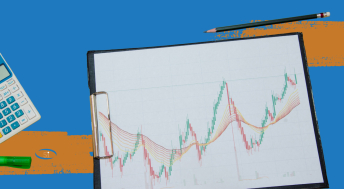An investor often compares a portfolio to other portfolios, funds, or benchmark indices by looking at holdings, returns, fees, and volatility (or beta). We want to dive into the technical aspect of portfolio evaluation, and what the following terms mean, and how an investor can utilize and consider the data:
Here are the terms/metrics we will look at:
- Benchmark holdings
- Top holdings
- Max Drawdown
- Profitable periods
- Upside/Downside capture
- Upside/downside semi-standard deviation and semi-variance
Benchmark Holdings indicates the overlap between the portfolio holdings and the benchmark set for the portfolio. The ‘active’ measure in the third column measures the percentage of the portfolio, as position weight, that differs from the benchmark index. It is a metric quantifying the level of active management within a portfolio. While this metric might not give a whole lot to an investor, investors allocating to investments with a higher portion of ‘active’ holdings typically expect a differentiated return profile relative to a passive or a benchmark-driven portfolio.
Top 15/25 holdings measure the total weight of the top 15 or 25 holdings in a portfolio. A higher percentage of a portfolio in 15 holdings would mean higher concentration, while the opposite would mean a highly diversified investment.
Max Drawdown, expressed as a percentage, measures the absolute worst-case scenario of a particular fund. It calculates, for an investor, the maximum fall in the value of the investment if an investor bought at the absolute peak and sold it at the lowest trough. The metric offers a quantitative estimate indicating the capital preservation quality of a fund, a peak-to-trough loss of investment. Ideally, investors would want the maximum drawdown to be as low as possible. A max drawdown of 0% would indicate that the fund has never declined in value, and on the other hand, a max drawdown of 100% would mean that the fund is now worthless as the entire capital has been lost at least once in the time frame selected.
Profitable periods measure the number of times, in a selected time frame (typically a month), a fund was 'up' relative to the total number of trading days in that time frame. A disadvantage of using the metric solely is that it does not quantify the level of decline. A decline as small as -0.01% would be considered a decline and vice versa for a gain.
Upside capture is the ratio of a portfolio return to the benchmark evaluated in a time frame when equities have risen in an up-market. The metric evaluated how a portfolio has performed relative to the benchmark fund during periods when the benchmark or index has risen. The ratio is calculated by dividing a portfolio’s returns by returns of the benchmark during the up-market. An upside ratio of 1.3 indicates that the portfolio has outperformed the market by 30% during the month of August, as indicated by the sample. This in conjunction with the ‘active’ share of portfolio gives investors a comparative tool to evaluate an active investment strategy.
A downside capture ratio reflects a portfolio’s performance in a down market, calculated by dividing portfolio returns to that of the benchmark index during a down market. A negative downside capture ratio of -0.67 indicates that the portfolio generally has a 'less negative' return on days that the benchmark index has had a negative return. Generally, a downside capture ratio of less than 1.0 indicates an outperformance compared to the benchmark in a down market. A ratio of 0.7 would mean that the portfolio only declined 70% of the total decline experienced by the benchmark during the period. A ratio of upside capture to downside capture also reflects how well a manager performs overall. As an example, a ratio of 1.3/0.7 gives 1.9 which means the portfolio is outperforming the benchmark overall, in either direction.
Variance and standard deviation are measures of risk in portfolio economies as they quantify a measure of volatility in a portfolio. Volatility, when measured, makes no difference between an above-average return or a below-average return, if they are both at a similar distance from the mean/average. A semi-std deviation, however, measures the upside or downside risk individually, unaffected by the corresponding opposite.
An upside semi-standard deviation only measures the portfolio returns above the mean in a specified period. A mean is calculated for the portfolio and the benchmark separately, depending on the monthly (or any period-specific) performance. An upside semi-standard of 0.94% means that the portfolio return saw an upward standard deviation of 0.94%, lower than 1.31% of the benchmark. This is not desirable, however, given that the other metrics reflect an outperformance means this is something that can be looked past. A down semi-standard deviation of 0.56%, lower than the benchmark’s 0.88% standard deviation means that the probability of having returns lower than the average is lower for the portfolio compared to the benchmark. A drawback to this metric is that it does not consider the actual mean, which would likely be higher for the portfolio compared to the benchmark.
Upside semi-variance and downside semi-variance give a measure of the variance of all results that fall above or below the mean excess return.
There is no stop to how mathematics can be used to evaluate numbers, returns, and performance. The ideas and numbers are thought-provoking; however, they are not meant as a clear-cut deciding factor on what portfolio would perform the best. Mathematics is based on probabilities and typically backward-looking data.
Happy Investing!

Disclosure: Please note that the author does not hold a financial or other interest in stocks or funds mentioned.






Comments
Login to post a comment.